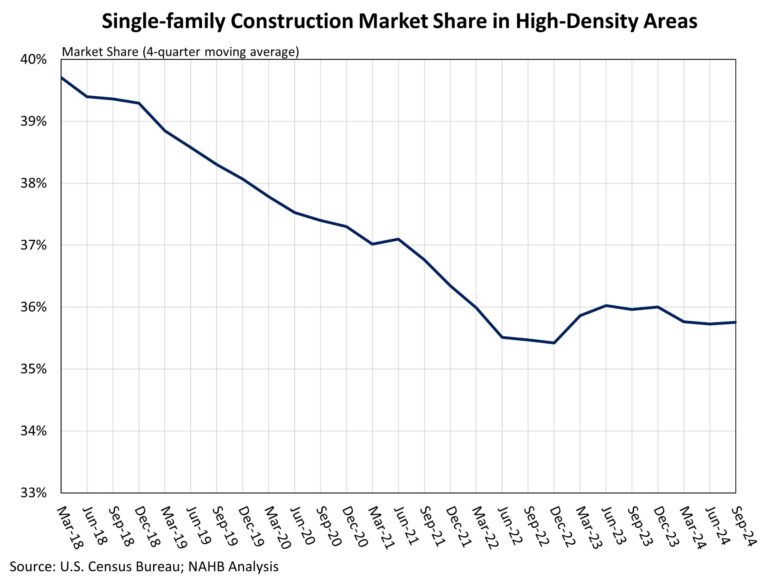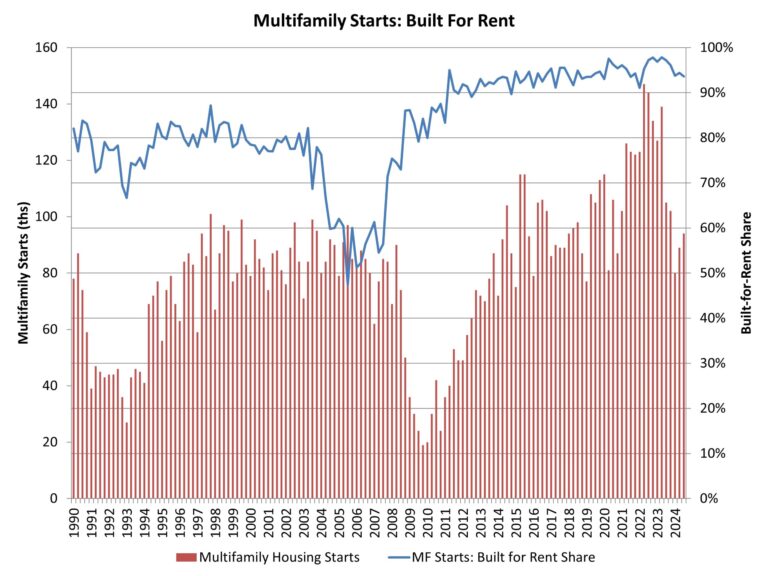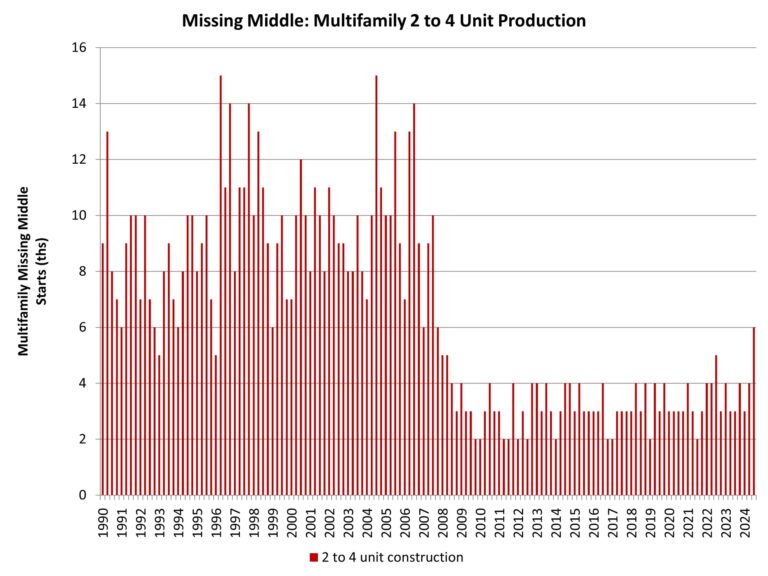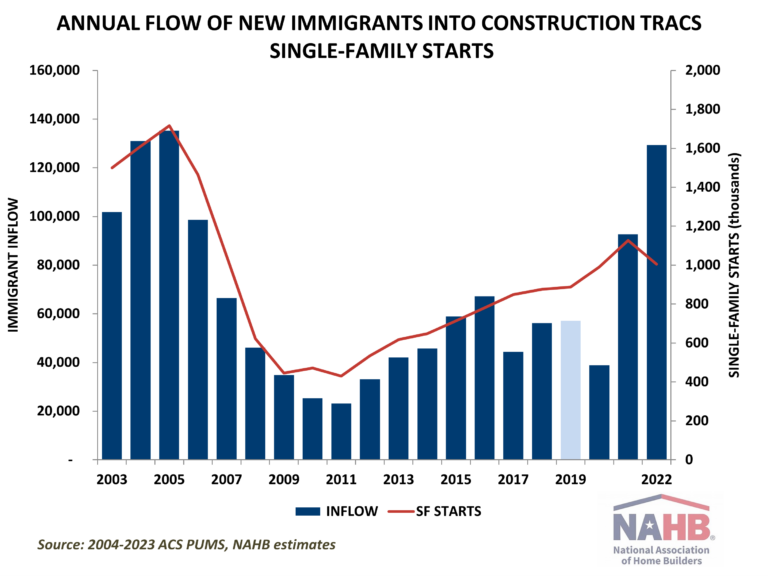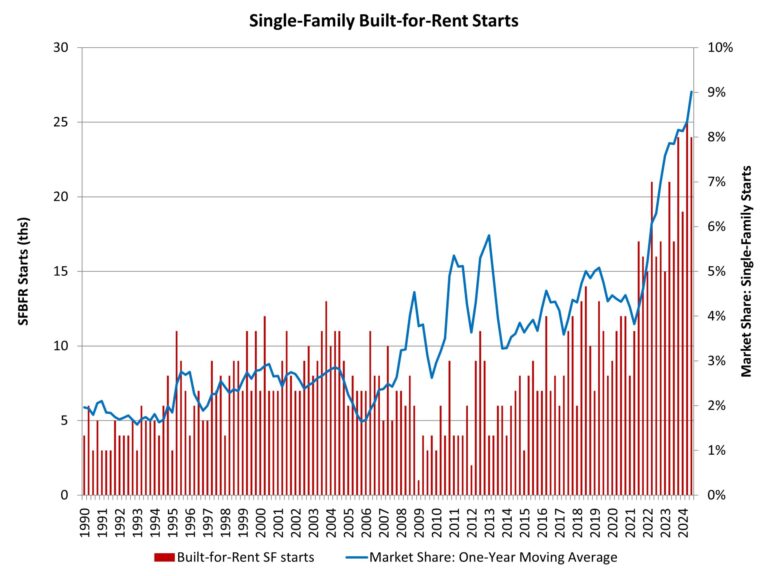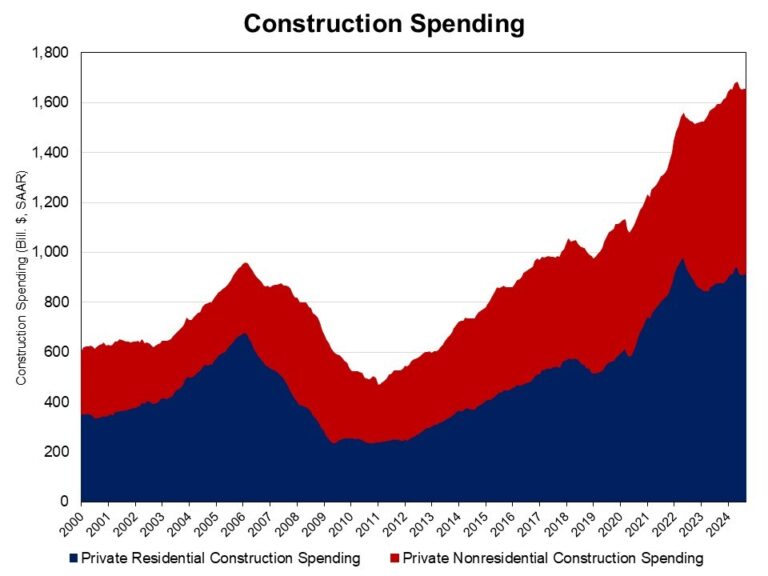After a period of slowing associated with declines for some elements of the residential construction industry, the count of open construction sector jobs trended lower in the October data, per the Bureau of Labor Statistics’ Job Openings and Labor Turnover Survey (JOLTS). The data indicates the demand for construction labor market remains weaker than a year ago.
In contrast, after revisions, the number of open jobs for the overall economy increased from 7.37 million to 7.74 million in October. Nonetheless, this is notably smaller than the 8.69 million estimate reported a year ago and is a sign of a softening aggregate labor market. Previous NAHB analysis indicated that this number had to fall below 8 million on a sustained basis for the Federal Reserve to feel more comfortable about labor market conditions and their potential impacts on inflation. With estimates remaining below 8 million for national job openings, the Fed is underway easing credit conditions.
The number of open construction sector jobs fell from a revised 258,000 in September to a softer 249,000 in October. Elements of the construction sector slowed in prior months as tight Fed policy persisted. The October reading of opening, unfilled construction jobs is lower than that registered a year ago: 413,000.
The construction job openings rate fell back to 2.9% in October and continues to trend lower, albeit with a fair amount of statistical month-to-month noise in the recent data.
The layoff rate in construction moved lower to 1.2% in October after a 2% rate in September. This was the lowest layoff rate for construction in the data series (going back to late 2000). The quits rate in construction increased to 1.9% in October.
Discover more from Eye On Housing
Subscribe to get the latest posts sent to your email.
This article was originally published by a eyeonhousing.org . Read the Original article here. .

